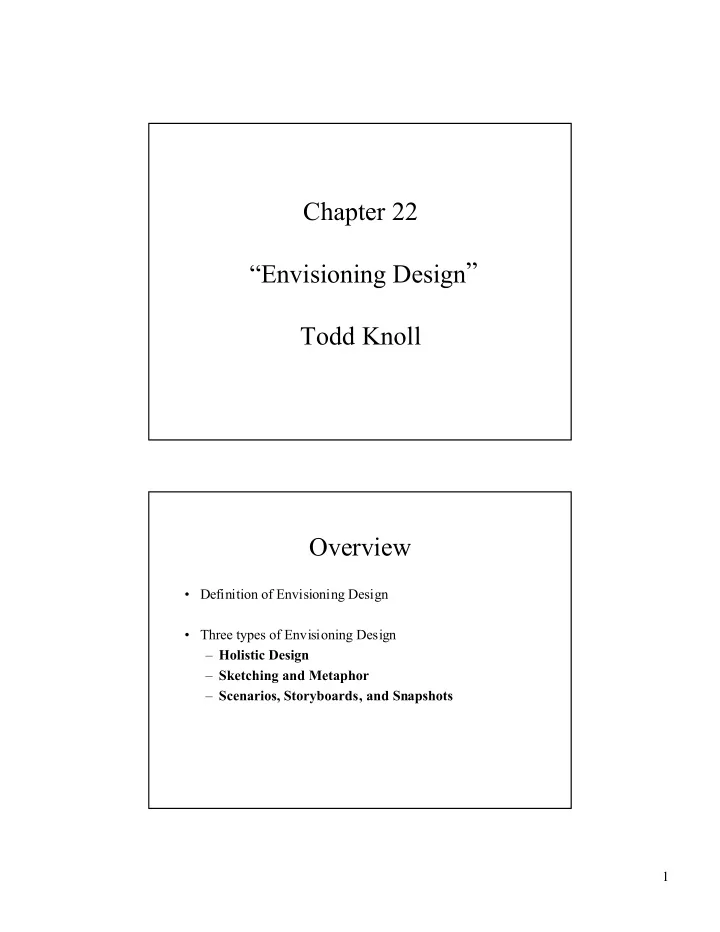

Chapter 22 ÒEnvisioning DesignÓ Todd Knoll Overview ¥ Definition of Envisioning Design ¥ Three types of Envisioning Design Ð Holistic Design Ð Sketching and Metaphor Ð Scenarios, Storyboards, and Snapshots 1
Envisioning Design ¥ This chapter discusses ways of conceptualizing the form of a design at a very early stage in terms that users can understand. ¥ Envisioning Design - bringing abstract ideas to life, as well as designing functionality. Holistic Design ¥ Holistic approach views the design as a whole. ¥ Decisions about the way an interface should look are made in relation to how it will be physically communicated to users. ¥ Holistic design is different from structured design because Ð it is less structured and constrained Ð no precise ordering of stages and representations Ð helps focus attention on appearance and the presentation of the conceptual model Ð helps visualize the design problem and solution in terms of an overall system image 2
Star User Interface ¥ Is an example of Holistic Design ¥ Uses the following design principles Ð familiar userÕs conceptual model Ð seeing and pointing versus remembering and typing Ð WYSIWYG Ð universal commands Ð consistency Ð simplicity Ð modeless interaction Ð user tailorability Star User Interface (continued) ¥ Consistent representations on paper and screen (WYSIWYG) ¥ Utilizes universal commands such as Ð move, copy, delete, and show ¥ Keys for changing characters fast such as Ð bold and italic ¥ Modeless interaction Ð noun-verb commands for all actions ¥ Tailorability such as Ð the ability to change desktop icons 3
Holistic Design ¥ One approach - Ò Game Playing Ó Ð playing a design Õ gameÕ with the users Ð was used for redesign of a newspaper production system in 1991 Ð the semantics and syntax of the game have to be situated Ð utilizes cards the represent the main functions, objects, and artifacts that are used to situate and guide the analysis Ð cards can be screen shots, sketching, and prototyping Sketching and Metaphor ¥ Designing a conceptual model as an explicit interface metaphor like the desktop metaphor already discussed ¥ Visual brainstorming to explore alternative designs using Ð initial sketches Ð cardboard representations of designs Ð scenarios Ð software or video prototypes Ð learning to be creative 4
Examples of Metaphors Scenarios, Storyboards, and Snapshots ¥ Scenario - a personalized , fictional story with characters, events, products, and environments Ð helps designer explore ideas and ramifications of design decisions in particular concrete situations ¥ Snapshots - single visual images that capture significant possible interaction ¥ Storyboards - sequences of snapshots that focus on the main actions in a possible situation 5
Recommend
More recommend